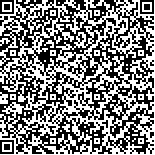|
| 引用本文: | 胡忠军,孙月娟,刘其根,何光喜,陈来生,曲宪成,余员龙,史文,刘国栋.浙江千岛湖深水区大型底栖动物时空变化格局.湖泊科学,2010,22(2):265-271. DOI:10.18307/2010.0217 |
| HU Zhongjun,SUN Yuejuan,LIU Qigen,HE Guangxi,CHEN Laisheng,QU Xiancheng,YU Yuan-long,SHI Wen,LIU Guodong.Temporal and spatial distribution of profundal macrozoobenthic community in Lake Qiand-ao,Zhejiang,China. J. Lake Sci.2010,22(2):265-271. DOI:10.18307/2010.0217 |
|
| |
|
|
| 本文已被:浏览 7388次 下载 4316次 |

码上扫一扫! |
|
|
| 浙江千岛湖深水区大型底栖动物时空变化格局 |
|
胡忠军1, 孙月娟1, 刘其根1, 何光喜2, 陈来生2, 曲宪成1, 余员龙1, 史文1, 刘国栋1
|
|
1.上海海洋大学农业部水产种质资源与利用重点开放实验室, 上海 201306;2.杭州千岛湖发展有限公司, 淳安 311700
|
|
| 摘要: |
| 2007-2008年对浙江千岛湖深水区底栖动物群落进行了研究.共调查到8种底栖动物,其中寡毛类7种,线形动物门1种.群落类型不存在季节差异,优势种为霍甫水丝蚓和正颤蚓.群落年均密度和生物量分别为594.6ind./m2和0.54g/m2.双因素方差分析表明,密度和生物量无季节变化,但存在显著的空间差异,两者均是上游>中游>下游.密度和生物量与水深、透明度显著负相关,前者与水柱混合水样的TN和TP、与底部局部水样的TP显著正相关,后者与水柱混合水样的TP显著正相关.逐步回归分析表明,水深是密度和生物量的唯-最优解释因子,随水深增加密度和生物量均呈指数式下降. |
| 关键词: 千岛湖 底栖动物 群落组成 密度 生物量 垂直分布 水平空间分布 季节动态 |
| DOI:10.18307/2010.0217 |
| 分类号: |
| 基金项目:国家自然科学基金项目(30670388);国家十-五科技支撑计划项目(2006BAD03B02-07);上海市重点学科建设项目(Y1101)联合资助 |
|
| Temporal and spatial distribution of profundal macrozoobenthic community in Lake Qiand-ao,Zhejiang,China |
|
HU Zhongjun1, SUN Yuejuan1, LIU Qigen1, HE Guangxi2, CHEN Laisheng2, QU Xiancheng1, YU Yuan-long1, SHI Wen1, LIU Guodong1
|
|
1.Key Laboratory of Aquatic Genetic Resource and Aquacultural Ecosystem Certificated of Agriculture,Shanghai Ocean University Shanghai 201306,P.R.China;2.Hangzhou Qiandaolake Development Co.Ltd.,Chun'an 311700,P.R.China
|
| Abstract: |
| The profundal community of macrozoobenthos in Lake Qiandao, Zhejiang Province, China has been seasonally investiga-ted from January 2007 to October 2008. A total of eight taxa were collected, among which 7 taxa belonged to oligochaeta and oneto nematoda. Limnodrilus hoffineisteri and Tubifex tubifex dominated the communities of macrozoobenthos, and type of which showedno seasonal vacation. Annual mean density and biomass were 594. hind./m2 and 0.54g/m2,respectively, and they neither dis-play any seasonal variation. However, both differed significantly in horizontal distribution with the maximum at the upper reachesand the minimum at the lower reaches. Density and biomass both negatively significantly correlated with water depth and secchidepth. Density positively correlated with TN and TP of mixed water samples of water column(MWSWC) and with TP of local watersamples at bottom (LWSB),respectively, and biomass positively correlated with TP of MWSWC. Only water depth from eight mainphysical and chemical parameters of LWSB could be accepted finally by the stepwise regression models and used to explain the vac-anon of density and biomass, which decreased exponentially with water depth. |
| Key words: Lake Qiandao macrozoobenthos community composition density biomass bathymetcc distribution horizontal dis-tribution seasonal dynamics |
|
|
|
|